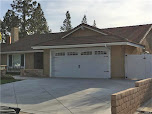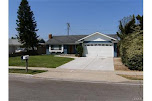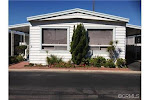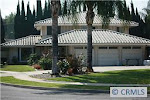Sunday, July 15, 2012
HOME SALES RESEMBLE BARGAINS AGAIN...DELINQUENCIES ARE DROPPING...FEWER LEAVING STATE, DATA SHOWS
These are just a few of the newspaper headlines recently. In fact, there is a lot of positive news. Even though the National jobs report was bleaker than expected, southern California's, although still shy of pre-recession numbers, has been one of the healthiest rebounds in the state. Perhaps "rebound" is still too strong a word to describe our job market, but nonetheless, the local unemployment rate is third lowest in the state and the best in our region, according to the state Employment Development Department. The top spots for low unemployment belong to Marin and San Mateo counties in the northern part of the state, Orange County bests all others down south with 7.4%. Although there is still some hesitation on the part of employers to hire freely, there is still more reason to be optimistic than a year ago. Now what about housing bargains? This column has often argued that to have a mentality that it is better to rent than to own at any time, is perhaps to simplify the home ownership debate to a most basic level of nothing more than out of pocket expenses per month. In other words, why own and have a house payment of two thousand dollars, when you can rent for $1,400. But this argument forgets tax savings, equity build up and more importantly, (as we covered in recent months), an inflation hedge. If you buy a home with a fixed rate mortgage, which right now is in the high 3 or low 4 percentiles, your housing costs in twenty years will be exactly what it is now. Anyone want to venture a guess what your $1,400 rent payment will be in 20 years. And you will never receive a dime of that back because you can't sell your rent house or apartment, you don't own it. As housing demands rise, and they are rising the quickest they have in the last decade, landlords have good incentive to raise rents, simple supply versus demand. Affordability is another big incentive as it hit the highest mark ever for the country at 77%. Probably the best incentive, is the housing payment itself, driven by low interest rates. You can get one right now for just about 13.5% of your income. Granted, this is a generalization because it's based on the national median housing cost, and the national median income. Housing costs are higher here, obviously, but so is income. Plus FHA has become a big part of the housing home loan picture, with many borrowers qualifying even though they earn over $100,000. What about fewer leaving the state? California had its biggest mass exodus in 1993,4,and 5. Those of us who lived here, remember it well. It was a dismal time. Defense spending plummeted, causing massive layoffs in defense, a major California employment sector, and military bases simply disappeared. Southern California basically lost a million jobs over 5 years. Although the numbers were nothing close to that in 2005,6,and 7, the state did see the highest numbers in a decade. But by 2009, the number fell to 112,000, which for a state with California's population, is not a startling number. But if you look at 2010, we have a population increase and no net exodus. This according to the Tax Foundation-- an anti-tax group that's not partial to California, but still reported that we're losing fewer people to other states. All told, there is reason to be optimistic about where California is headed. We have oceans, beaches, desert, mountains, skiing, and moderate temperatures, and a more highly skilled work force than most other states. We have some good reasons to be optimistic. People need to live somewhere. Ain't real estate great?
WHAT ABOUT THE ELEPHANT IN THE ROOM? HOUSES THAT ARE "UNDERWATER." WHO'S IN IT DEEP?
According to Zillow, 9,200 homes are worth half their mortgage. Another 14.1%, or 62,500 households, owe about 20% more than their homes are worth. And approximately 8.2%, or 36,600 homes, owe 40% more than their home is worthy. Now without getting into the debate of how many of these homes were bought at market value in the past 12 to 14 years, and were refinanced two and three times, while owners took maximum cash in hand, much like an ATM, it can be argued that all but the most severe waterlogged properties, will, if held long enough, become once again equity properties for their owners. But less the reader believe, erroneously, that every property is in danger, give you some numbers to bring comfort to the discouraged. According to LPS Farm 2.0, a data company for title companies, there is a total of 696,776 residential properties in Orange County, that includes condos and single family residences only, both owner occupied and non-owner occupied (rentals). When you look at that number, you can see there is a lot more home equity in this county than there is waterlog. It's just that writing about the positive through all of this downturn, doesn't sell papers. In fact, for the last full month available, there were 1,337 equity sales or single family residential properties in Orange County and 591 distressed sales (includes short sales and bank owned). Condos didn't fare quite as well, but still, there were 427 equity sales of condos.
WHAT WERE THE ACTUAL NUMBERS?
The median price for a home for Orange County was $488,000, which was down just 1.4% from 2011, indicating the bottom of the market and a nearly stable market as well. There were2,038 closed sales of single family resale and that was up 16.8% from the previous year, month over month. When you add in condos and new home sales, the grand total is 3,059 and that is up 14.1% from the previous year. There were 1,214 Notices of Default filed, down almost 25% from 2011 monthly totals and Notices of Trustee Sale, the last notice prior to foreclosure plummeted down to fewer than 1,000, after totaling nearly 1,750 month after month in 2011.
HOME OWNERSHIP STILL THE DREAM FOR AMERICA
A survey recently completed that appeared on the blog, "Keeping Current Matters", reveals that 91% of Americans surveyed, still say owning a home is a part of their American Dream. But even more encouraging is the number of the "renting generation", that is 18-34 year olds who have yet to enter the market, an amazing 84% say they intend to buy. Couple that with the affordability index that we have right now, and the real estate recovery would seem confirmed. Just don't expect to go up as fast as it did to begin the first decade of this century, and don't expect it to go up as fast as it came down. Finally, a note regarding short sales. If you find yourself upside down in your home and have mitigating factors that are causing a need to move, don't assume you can't sell your property short. There are some myths out there concerning that proposition, and you owe it to yourself to have an expert evaluate your position. Here are two myths: 1) banks don't want to participate in a short sale. Nothing could be further from the truth. Banks have finally realized how much money and time they save by allowing a Realtor to sell and close escrow successfully in a short sale process. You may even be eligible for "cash for keys" to help with your relocation. 2) The short sale process is too difficult and they often get denied. That was true five years ago. Banks dragged their heels and the transactions were dubbed "long sales" by those of us in the industry. But today, the average short sale takes about 90 days unless there are unforeseen circumstances. Make sure you know all your options.
Subscribe to:
Posts (Atom)











































